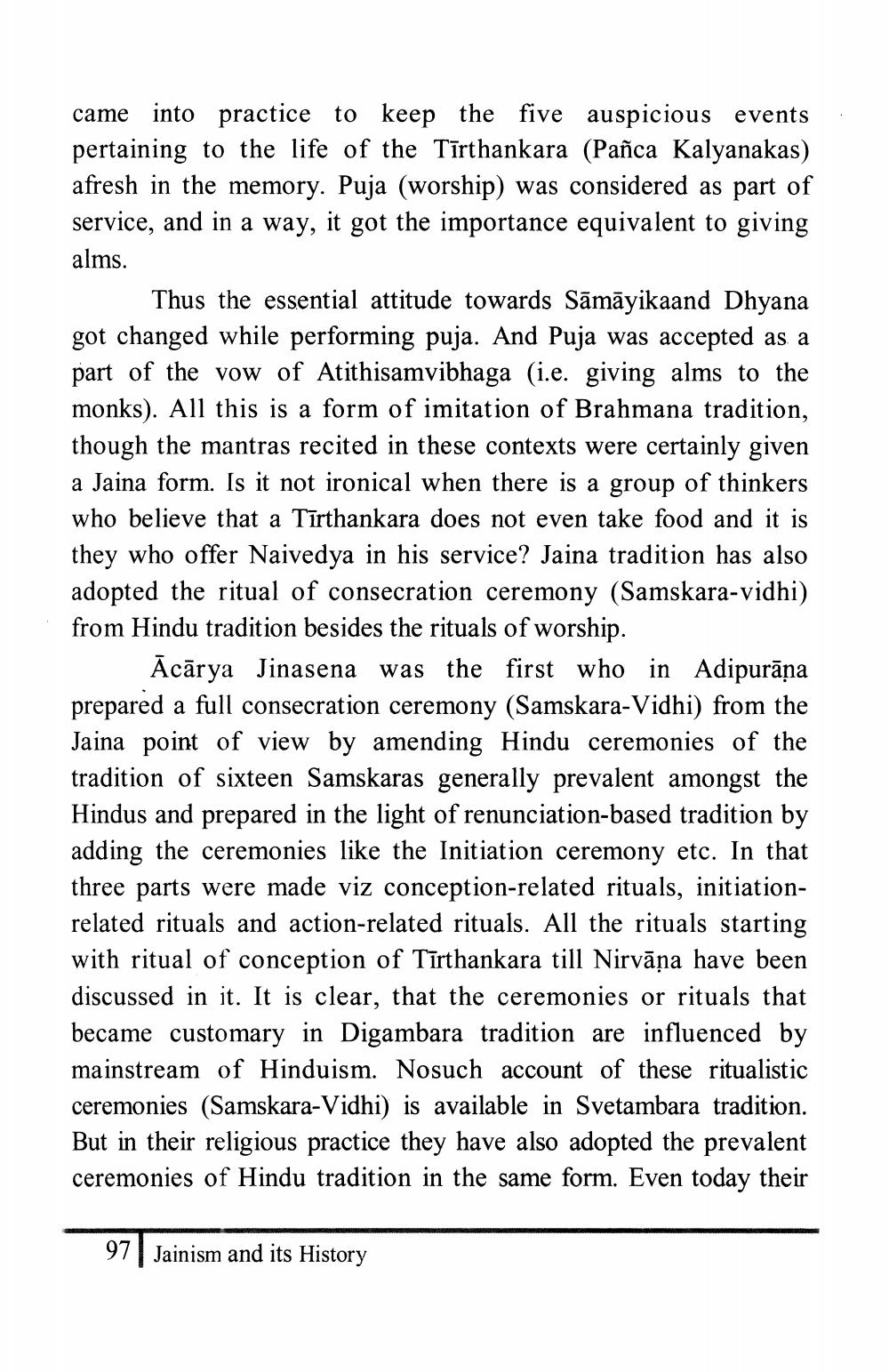________________
came into practice to keep the five auspicious events pertaining to the life of the Tīrthankara (Pañca Kalyanakas) afresh in the memory. Puja (worship) was considered as part of service, and in a way, got the importance equivalent to giving
alms.
Thus the essential attitude towards Sāmāyikaand Dhyana got changed while performing puja. And Puja was accepted as a part of the vow of Atithisamvibhaga (i.e. giving alms to the monks). All this is a form of imitation of Brahmana tradition, though the mantras recited in these contexts were certainly given a Jaina form. Is it not ironical when there is a group of thinkers who believe that a Tirthankara does not even take food and it is they who offer Naivedya in his service? Jaina tradition has also adopted the ritual of consecration ceremony (Samskara-vidhi) from Hindu tradition besides the rituals of worship.
Acārya Jinasena was the first who in Adipurāṇa prepared a full consecration ceremony (Samskara-Vidhi) from the Jaina point of view by amending Hindu ceremonies of the tradition of sixteen Samskaras generally prevalent amongst the Hindus and prepared in the light of renunciation-based tradition by adding the ceremonies like the Initiation ceremony etc. In that three parts were made viz conception-related rituals, initiationrelated rituals and action-related rituals. All the rituals starting with ritual of conception of Tirthankara till Nirvāņa have been discussed in it. It is clear, that the ceremonies or rituals that became customary in Digambara tradition are influenced by mainstream of Hinduism. Nosuch account of these ritualistic ceremonies (Samskara-Vidhi) is available in Svetambara tradition. But in their religious practice they have also adopted the prevalent ceremonies of Hindu tradition in the same form. Even today their
97 Jainism and its History




